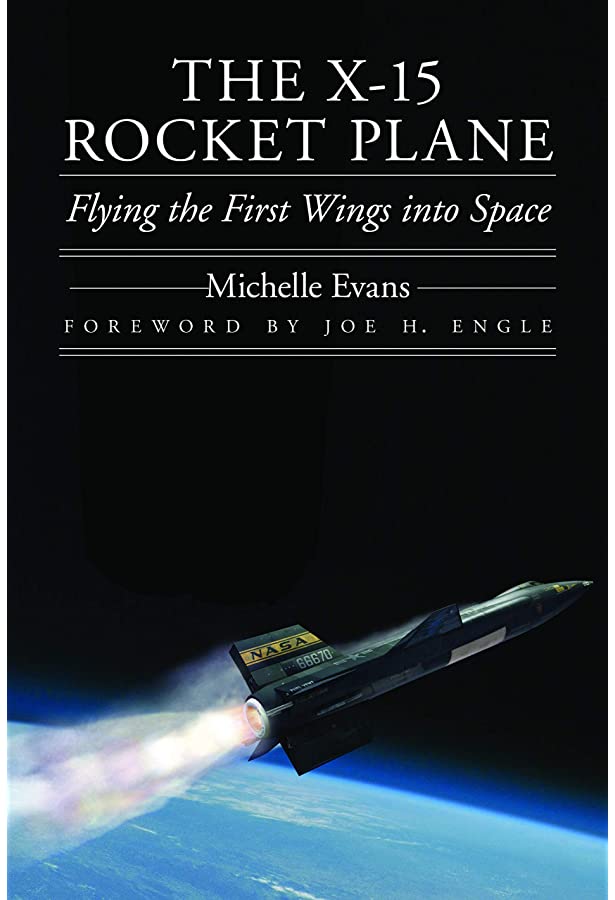When the Soviet Union launched Sputnik, the first man-made satellite, into low-earth orbit in 1957, it set the Space Race in full motion. The United States was determined to break the barriers of man’s entry into space and dominate this undiscovered country.
While NASA projects Mercury, Gemini, and especially Apollo are often remembered and celebrated, a little-remembered partnership between the US Air Force and NASA brought an incredible new aircraft, arguably the first-ever manned spacecraft, to life: the X-15.

Author Michelle Evans’ 2013 book “The X-15 Rocket Plane: Flying the First Wings into Space” brings new life to the story of the X-15, those who flew the powerful plane, and the men and women who made the X-15 possible, in the air, on the ground, and behind the scenes.

The X-15 was a hypersonic, rocket-powered airplane capable of flying as high as 100 kilometers above the earth’s surface, meeting the internationally-accepted boundary of space. It was capable of speeds up to 6.7 times the speed of sound. This speed set a record in 1967 that remains unbroken.
Only 3 X-15s were ever built, and the program only lasted between 1959 and 1968, but the knowledge gained through that program proved invaluable to the future of air travel and space flight.
About the Author of The X-15 Rocket Plane
Evans’ background as a US Air Force aerospace engineer gives her unique insight into the subject matter as the book’s author. To research the book, she conducted 80 interviews, including interviews with nine of the 12 people who ever flew the plane. These include famed test pilot Scott Crossfield and astronauts Neil Armstrong, Joe Walker, and Robert White.
She also spoke with managers, flight planners, and the technicians and engineers from NASA, the US Air Force, and US Navy, who made the X-15’s 199 flights possible. And there was a lot of work to do to make it possible.
The plane had to be launched from a B-52 Stratofortress “mother aircraft,” for launch, it had to withstand the heat created by flying upwards of Mach 7 and then be able to jettison its lower stabilizing fin before it came in for a landing. It was intended to be the way NASA launched military-crewed spacecraft into orbit but was canceled by NASA after it chose to pursue Project Mercury instead.
Testing continued with the X-15 until 1968, however, because the program still provided the Air Force and the space agency with valuable information.

Evans’ thoroughly-researched book about the X-15 was a finalist for the Eugene M. Emme Award for Astronautical Literature. Evans’ work has appeared in numerous publications, including Air & Space Smithsonian, Ad Astra, Orange County Register, Los Angeles Times, and New York Times. Has been featured in both Time and Newsweek Magazines and consulted with National Geographic television for their production of “The Real Right Stuff.”
“The X-15 Rocket Plane, Flying the First Wings into Space” by Michelle Evans is available on Kindle, Audiobook, Hardcover, and Paperback from Amazon or Barnes and Noble, starting at $22.49.

0 Comments